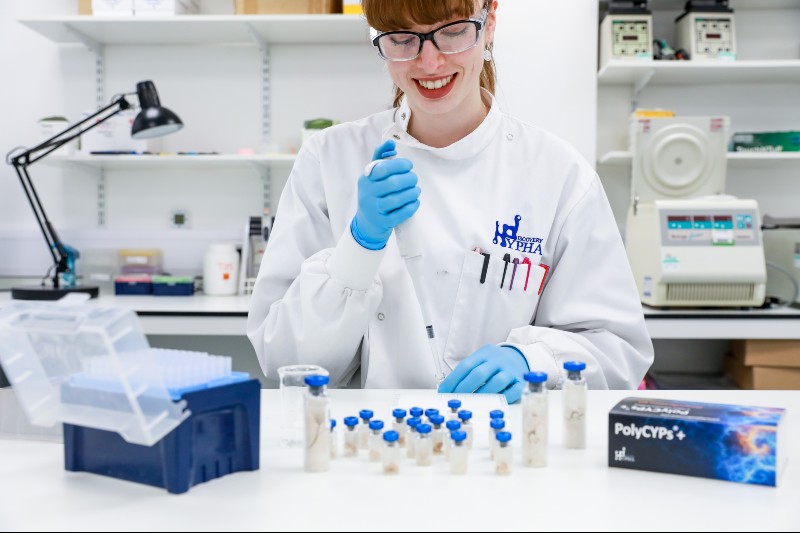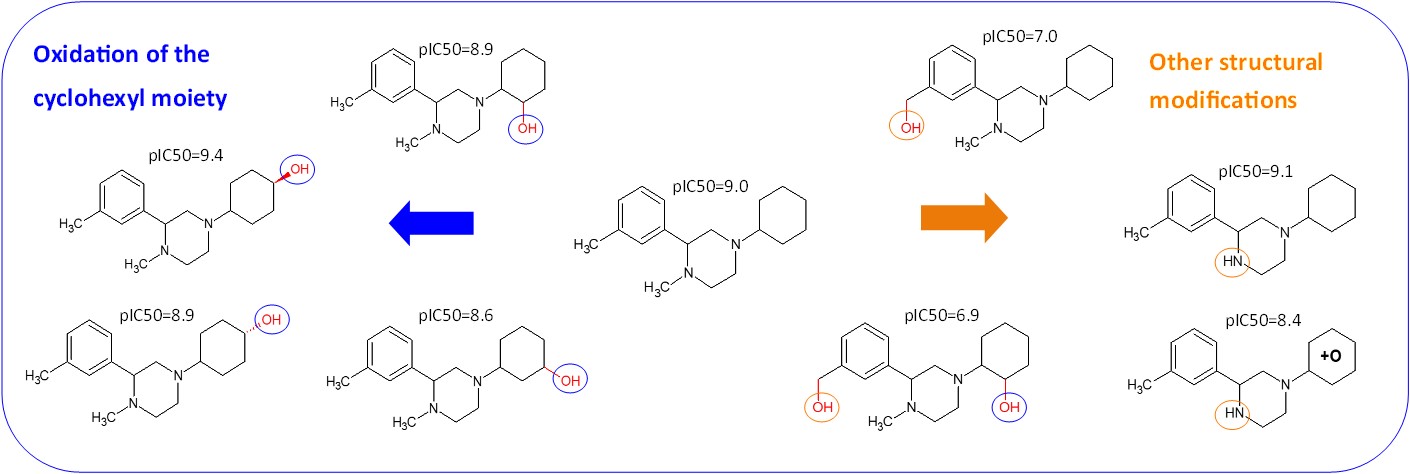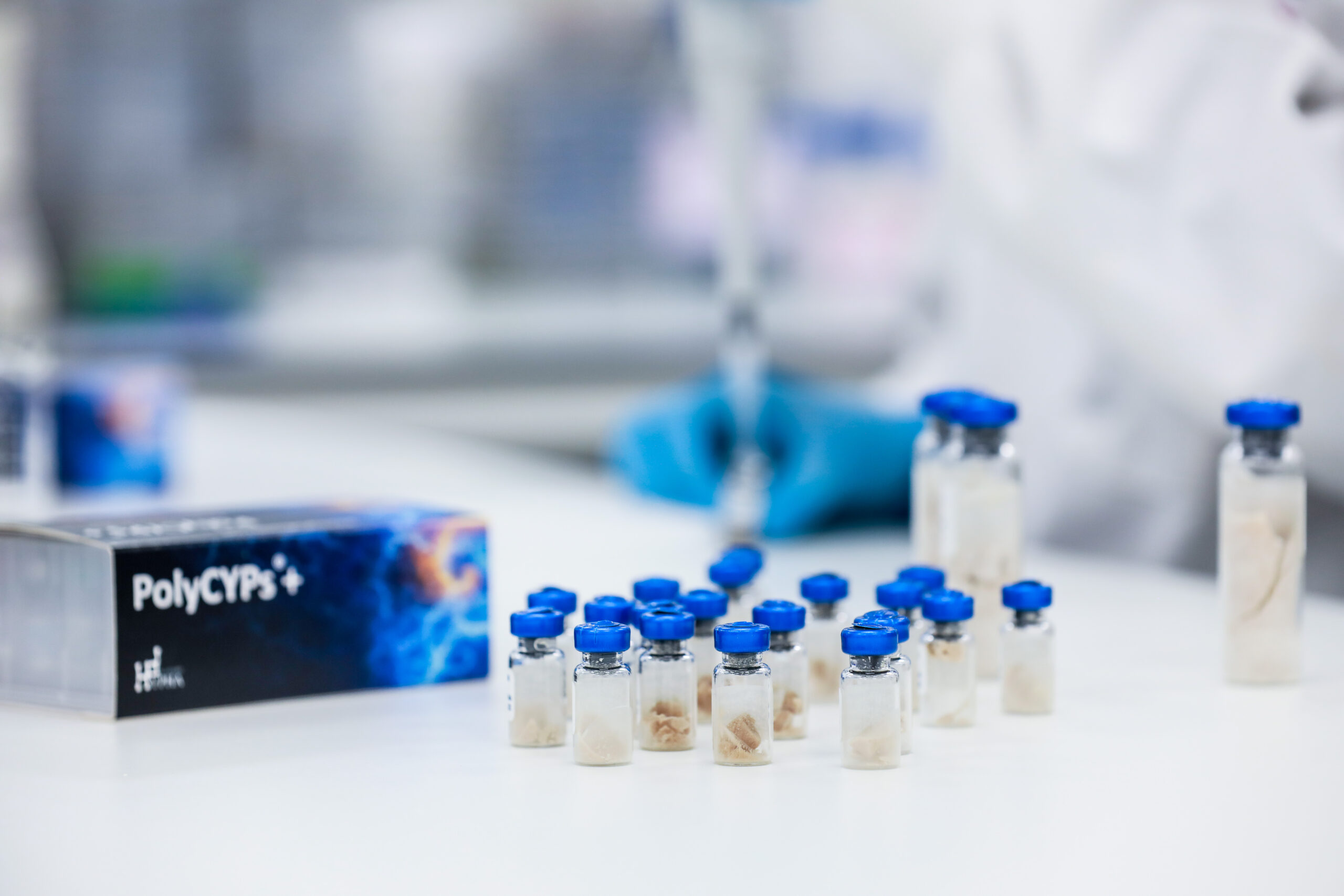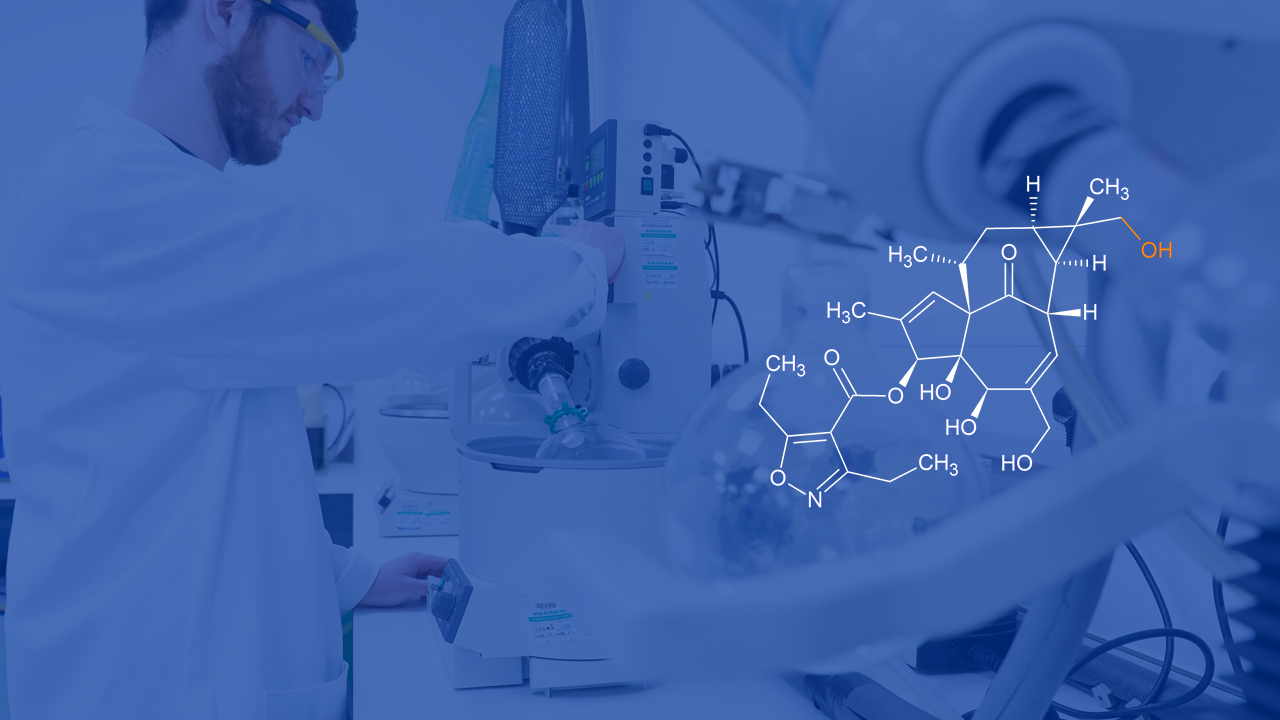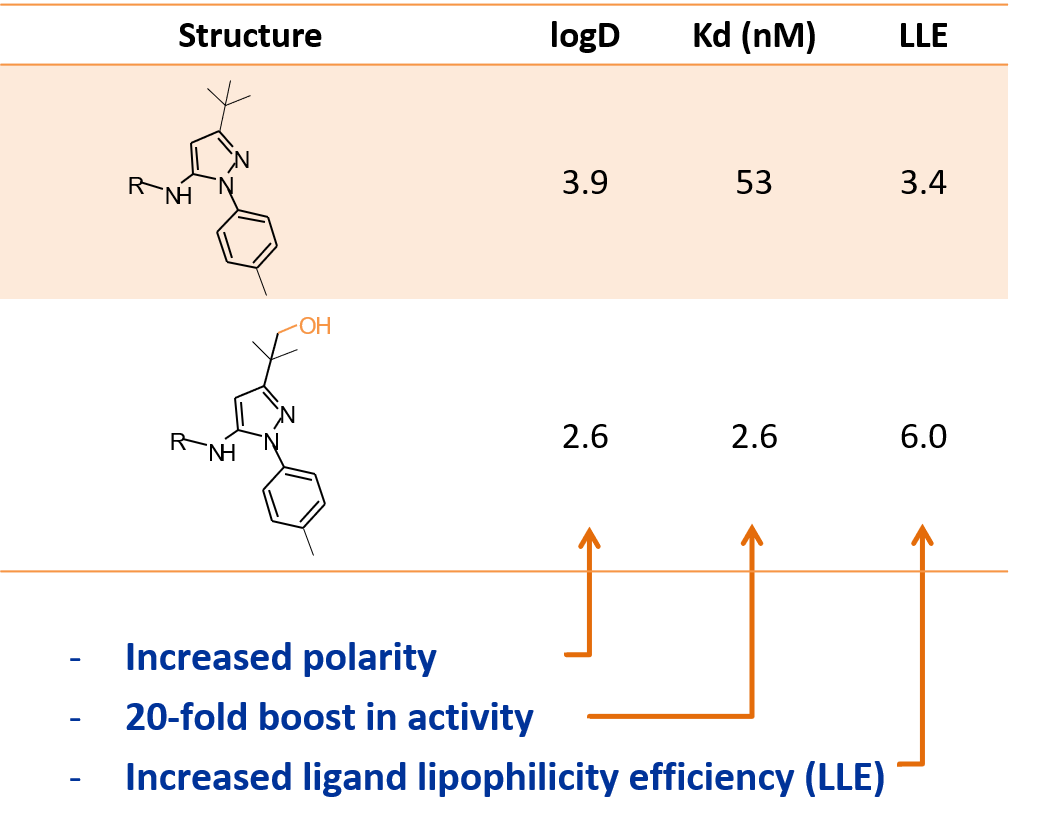Resources
Scientific posters
Posters
Metabolism of drugs often results in the formation of major circulating metabolites derived from mixed clearance pathways, and can include both primary and secondary metabolites. Human metabolism of Incyte’s investigational new drug epacadostat (EPA) forms 3 major circulating plasma metabolites (Boer et al., 2016). Glucuronidation of EPA to form M9 is the dominant metabolic pathway, in conjunction with formation of an amidine M11 and an N-dealkylated metabolite, M12. Boer and co-workers showed that reductive metabolism by gut microbiota results in M11, which is then absorbed and further modified by CYP enzymes to form the secondary metabolite M12.
Introducing chemical diversity into a drug candidate late in the optimisation process has several applications including exploration of SAR (structure-activity relationships). Biocatalysis can provide access to chemical space in a complementary manner to chemical synthesis, thereby broadening coverage of the SAR map to better understand how small changes in the molecular structure affect biological potency.
A cell-free kit of cytochrome P450 enzymes and ferredoxin/ferredoxin reductase redox partners, termed PolyCYPs®, is being developed for generating scalable quantities of oxidised metabolites. P450 cytochromes in the kit have been derived from some of Hypha’s most talented biotransforming bacteria and are capable of generating human and other mammalian metabolites of drug compounds.
A cell-free kit of cytochrome P450 enzymes and ferredoxin / ferredoxin reductase redox partners, termed PolyCYPs, is under development for generating scalable quantities of oxidised metabolites. Cytochrome P450s in the kit have been derived from Hypha’s talented biotransforming actinomycetes and are capable of generating human and other mammalian metabolites of drug compounds. The catalytic abilities of two P450 enzymes in the kit, which have been cloned from two different actinomycete species into E. coli, are illustrated using bosentan.
This poster illustrates the process undertaken at Hypha to produce a major human metabolite of ingenol disoxate for regulatory compliance.
Microbial biotransformation offers an alternative and complementary approach to synthetic medicinal chemistry for the structural diversification of hit or lead compounds. Hypha Discovery has a scalable microbial process effective for activating C-H bonds to achieve aliphatic and aromatic hydroxylation. Applications include boosting ligand lipophilicity efficiency, improving selectivity, exploring SAR, creating handles for further derivatisation (e.g. fluorination for PET ligand formation or to block metabolism), or simply to highlight the conversion into active mammalian metabolites.
Stay up to date with the latest news from Hypha Discovery
Sign up for our quarterly newsletters and monthly "Metabolite Tales" blog
Ready to begin? Our scientists are available to talk through your requirements
Hypha Discovery is a UK-based CRO supporting pharmaceutical and agrochemical companies worldwide through the production of metabolites and new derivatives of drugs and agrochemicals in discovery and development.
Resources
Cookie Policy | Privacy Policy | Website Terms and Conditions
© Hypha Discovery 2021. All Rights Reserved. Website by Fifteen.co.uk
